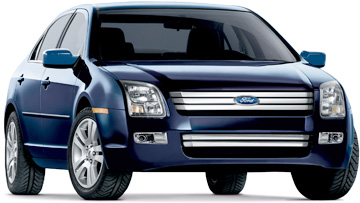
Ford Motor Co.’s warranty costs are dropping rapidly as the auto maker seeks to meet an internal objective of besting the levels of its top Asian competitors, says Curt Yun, Ford’s director-global warranty analysis.
Ford’s warranty cost as a percent of revenue last year was slightly more than 2%, a level that bests the auto maker’s domestic competitors and is closing in on the likes of Toyota Motor Corp. and Honda Motor Co. Ltd., Yun tells Ward’s. “This is easily the lowest (warranty costs have) been in the last 10 years.”
Toyota and Honda warranty claims stand at about 1.3%, according to Warranty Week, an industry newsletter.
Yun attributes Ford’s improvement to a variety of initiatives, beginning with a renewed focus on quality during new-car launches.
In the past, vehicles with quality issues at launch led to numerous recalls, damaging the auto maker’s reputation and negatively affecting sales. Such was the case with the ’00 Ford Focus.
The Focus by 2002 had seen nine safety recalls and five defect investigations, making it the most recalled car since General Motors Corp.’s X-car lineup that included the Buick Skylark, Chevrolet Citation, Oldsmobile Omega and Pontiac Phoenix.
Today, Ford would rather delay a launch than go with less than best-in-class quality levels. The auto maker pushed back the rollout of its highly acclaimed Ford Edge and Lincoln MKX cross/utility vehicles for this reason.
Launch quality “has been one of the things that helped us pull away from our domestic competitors and put our focus on competing with the Asians for quality and model standings,” he says. “Our recently introduced models show we’re closing in rapidly.”

Once a vehicle is launched, its quality is closely monitored and any issues that arise are promptly reported to the factory. If a certain part or component is the culprit, the auto maker works with the supplier or adjusts production procedures to solve the problem.
“Our plants receive and analyze warranty claims from dealerships every day,” Yun says. “That’s one of the processes now built into the fabric of our business. We’re producing fewer defects, and if (problems come up), we find them and contain them and resolve them more quickly than we ever have.”
Dealers are playing a part in driving down warranty costs, as well, using a multi-step process created by Ford. Dealerships performing more warranty work than their peers or taking more time to make the fix, are provided information to help improve their results in what the auto maker calls the “dealer self-correction phase.”
If this first phase fails to produce the necessary results, Ford then conducts a phone-based consultation with the dealer, Yun says. Should all else fail, Ford has a team that works with the dealer onsite.
“It’s all aimed at proactively bettering dealer processes,” Yun says. “None of it is punitive.”
Dealers have embraced the program, despite the fact fewer warranty claims equate to less work in their service departments.
“In the long run, customers with higher quality ownership experiences will have higher loyalty to Ford and their dealers, “ Yun says.
The money Ford is saving on warranty costs is being funneled into new vehicle programs.
Meanwhile, Ford spokesman Mark Schirmer confirms the Lincoln Mark LT will be discontinued following the ’08 model year. The Lincoln pickup will be replaced by the upcoming ’09 F-150 Platinum Series, which Ford says will be the most luxurious F-150 ever built.
A production version of the Lincoln MKT CUV concept, shown at January’s North American International Auto Show in Detroit, is under consideration.




